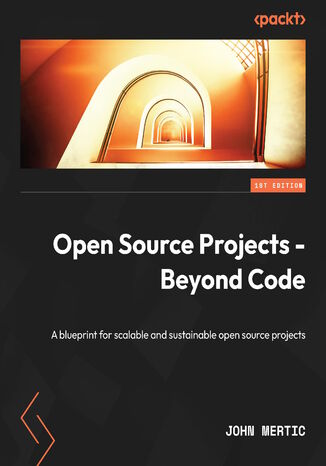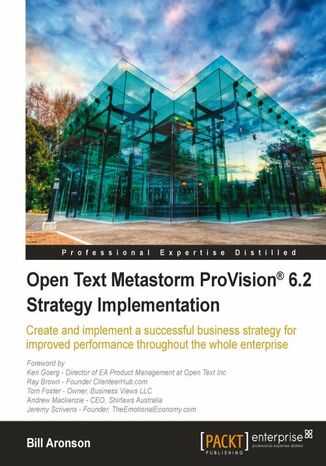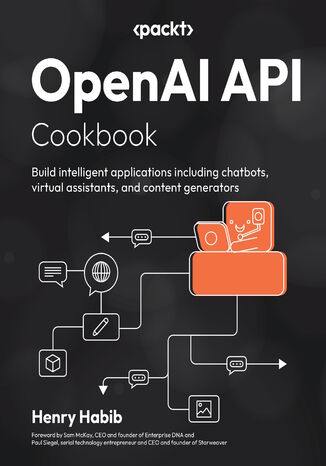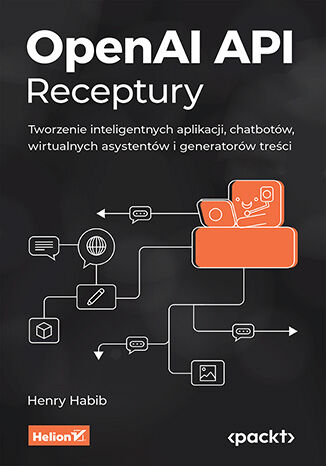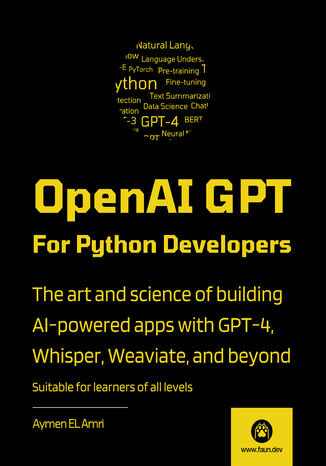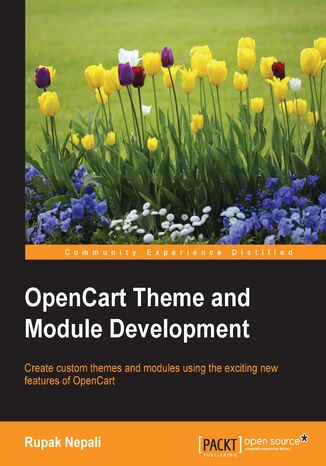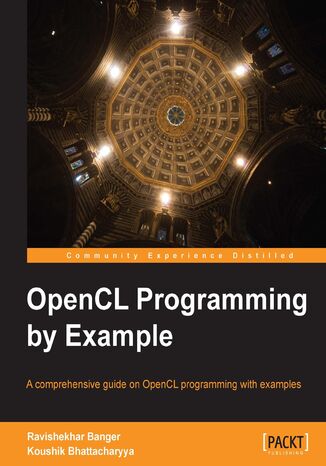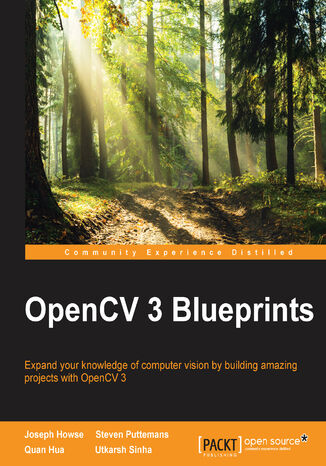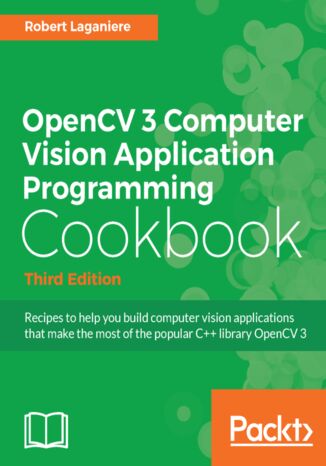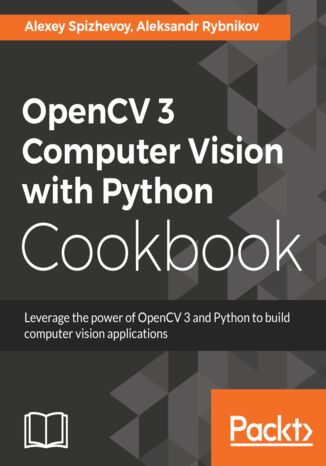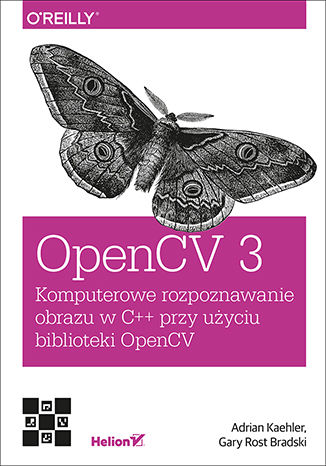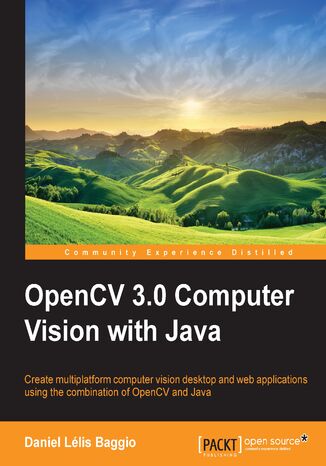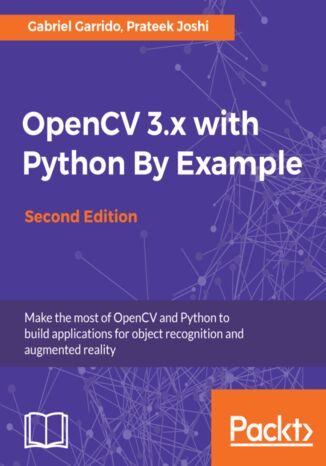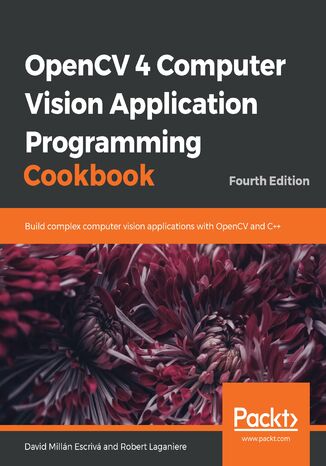Categories
-
- Bitcoin
- Businesswoman
- Coaching
- Controlling
- E-business
- Economy
- Finances
- Stocks and investments
- Personal competence
- Computer in the office
- Communication and negotiation
- Small company
- Marketing
- Motivation
- Multimedia trainings
- Real estate
- Persuasion and NLP
- Taxes
- Social policy
- Guides
- Presentations
- Leadership
- Public Relation
- Reports, analyses
- Secret
- Social Media
- Sales
- Start-up
- Your career
- Management
- Project management
- Human Resources
-
- Architektura i wnętrza
- Health and Safety
- Biznes i Ekonomia
- Home and garden
- E-business
- Ekonomia i finanse
- Esoterecism
- Finances
- Personal finance
- Business
- Photography
- Computer science
- HR & Payroll
- For women
- Computers, Excel
- Accounts
- Culture and literature
- Scientific and academic
- Environmental protection
- Opinion-forming
- Education
- Taxes
- Travelling
- Psychology
- Religion
- Agriculture
- Book and press market
- Transport and Spedition
- Healthand beauty
-
- Office applications
- Data bases
- Bioinformatics
- IT business
- CAD/CAM
- Digital Lifestyle
- DTP
- Electronics
- Digital photography
- Computer graphics
- Games
- Hacking
- Hardware
- IT w ekonomii
- Scientific software package
- School textbooks
- Computer basics
- Programming
- Mobile programming
- Internet servers
- Computer networks
- Start-up
- Operational systems
- Artificial intelligence
- Technology for children
- Webmastering
-
- Antology
- Ballade
- Biographies and autobiographies
- For adults
- Dramas
- Diaries, memoirs, letters
- Epic, epopee
- Essay
- Fantasy and science fiction
- Feuilletons
- Work of fiction
- Humour and satire
- Other
- Classical
- Crime fiction
- Non-fiction
- Fiction
- Mity i legendy
- Nobelists
- Novellas
- Moral
- Okultyzm i magia
- Short stories
- Memoirs
- Travelling
- Narrative poetry
- Poetry
- Politics
- Popular science
- Novel
- Historical novel
- Prose
- Adventure
- Journalism, publicism
- Reportage novels
- Romans i literatura obyczajowa
- Sensational
- Thriller, Horror
- Interviews and memoirs
-
- Archeology
- Bibliotekoznawstwo
- Cinema studies
- Philology
- Polish philology
- Philosophy
- Finanse i bankowość
- Geography
- Economy
- Trade. World economy
- History and archeology
- History of art and architecture
- Cultural studies
- Linguistics
- Literary studies
- Logistics
- Maths
- Medicine
- Humanities
- Pedagogy
- Educational aids
- Popular science
- Other
- Psychology
- Sociology
- Theatre studies
- Theology
- Economic theories and teachings
- Transport i spedycja
- Physical education
- Zarządzanie i marketing
-
- Health and Safety
- History
- Road Code. Driving license
- Law studies
- Healthcare
- General. Compendium of knowledge
- Academic textbooks
- Other
- Construction and local law
- Civil law
- Financial law
- Economic law
- Economic and trade law
- Criminal law
- Criminal law. Criminal offenses. Criminology
- International law
- International law
- Health care law
- Educational law
- Tax law
- Labor and social security law
- Public, constitutional and administrative law
- Family and Guardianship Code
- agricultural law
- Social law, labour law
- European Union law
- Industry
- Agricultural and environmental
- Dictionaries and encyclopedia
- Public procurement
- Management
-
- Africa
- Albums
- Southern America
- North and Central America
- Australia, New Zealand, Oceania
- Austria
- Asia
- Balkans
- Middle East
- Bulgary
- China
- Croatia
- The Czech Republic
- Denmark
- Egipt
- Estonia
- Europe
- France
- Mountains
- Greece
- Spain
- Holand
- Iceland
- Lithuania
- Latvia
- Mapy, Plany miast, Atlasy
- Mini travel guides
- Germany
- Norway
- Active travelling
- Poland
- Portugal
- Other
- Przewodniki po hotelach i restauracjach
- Russia
- Romania
- Slovakia
- Slovenia
- Switzerland
- Sweden
- World
- Turkey
- Ukraine
- Hungary
- Great Britain
- Italy
-
- Philosophy of life
- Kompetencje psychospołeczne
- Interpersonal communication
- Mindfulness
- General
- Persuasion and NLP
- Academic psychology
- Psychology of soul and mind
- Work psychology
- Relacje i związki
- Parenting and children psychology
- Problem solving
- Intellectual growth
- Secret
- Sexapeal
- Seduction
- Appearance and image
- Philosophy of life
-
- Bitcoin
- Businesswoman
- Coaching
- Controlling
- E-business
- Economy
- Finances
- Stocks and investments
- Personal competence
- Communication and negotiation
- Small company
- Marketing
- Motivation
- Real estate
- Persuasion and NLP
- Taxes
- Social policy
- Guides
- Presentations
- Leadership
- Public Relation
- Secret
- Social Media
- Sales
- Start-up
- Your career
- Management
- Project management
- Human Resources
-
- Antology
- Ballade
- Biographies and autobiographies
- For adults
- Dramas
- Diaries, memoirs, letters
- Epic, epopee
- Essay
- Fantasy and science fiction
- Feuilletons
- Work of fiction
- Humour and satire
- Other
- Classical
- Crime fiction
- Non-fiction
- Fiction
- Mity i legendy
- Nobelists
- Novellas
- Moral
- Okultyzm i magia
- Short stories
- Memoirs
- Travelling
- Poetry
- Politics
- Popular science
- Novel
- Historical novel
- Prose
- Adventure
- Journalism, publicism
- Reportage novels
- Romans i literatura obyczajowa
- Sensational
- Thriller, Horror
- Interviews and memoirs
-
- Philosophy of life
- Interpersonal communication
- Mindfulness
- General
- Persuasion and NLP
- Academic psychology
- Psychology of soul and mind
- Work psychology
- Relacje i związki
- Parenting and children psychology
- Problem solving
- Intellectual growth
- Secret
- Sexapeal
- Seduction
- Appearance and image
- Philosophy of life
Marcus Joch, Red. Wojciech Browarny, Monika Wolting
Kiedy przystępowałem do lektury tekstów składających się na ten zbiór, przypomniałem sobie słowa jednego z trzech dziewiętnastowiecznych tłumaczy Pana Tadeusza, Alberta Weissa, który wypowiedział je pod koniec życia: „Nie bacząc na – jak się wydaje – wręcz niemożliwe do wykorzenienia uprzedzenia płynące z narodowościowej niechęci i nienawiści panującej między Polakami i Niemcami, głównie z zamiarem torowania przy pomocy sztuki słowa drogi porozumienia, starałem się lata całe przekazywać czytelnikowi niemieckiemu skarby piśmiennictwa słowiańszczyzny”. Zebrane tu artykuły polskich i niemieckich historyków literatury, podobnie jak kiedyś działalność translatorska Weissa, mogą wnieść istotny wkład do dzieła porozumienia między Polakami i Niemcami. Sygnalizowana w tytule „opcja niemiecka”, rozumiana tutaj metaforycznie, to postawa sprzyjająca wzbogacaniu tożsamości dzisiejszych mieszkańców Śląska, Pomorza, Warmii i Mazur poprzez specyficzny rodzaj „zawłaszczania” dorobku kulturowego dawnych mieszkańców tych prowincji, postawa sprzyjająca upowszechnianiu pozytywnego wizerunku sąsiada zza Odry i intensyfikacji dialogu, który ciągle jeszcze jest najważniejszym dezyderatem w polityce zbliżania Polaków i Niemców. prof. dr hab. Edward Białek
Anomalia pogodowa, która zaskoczyła żeglarzy na mazurskich jeziorach, złowrogi "biały szkwał", zabrał ze sobą wiele osób. Śmierć jednego z nich, dobrze sytuowanego pracownika banku, Włodzimierza Rawy zdaje się jednak nie być przypadkiem... Sprawę, z początku potajemnie, potem na wpół oficjalnie, prowadzi smakosz win, miłośnik koszul w krzykliwych kolorach i muzyki zespołu Rammstein - komisarz Ireneusz Nawrocki. Czy przebywający już jedną nogą na emeryturze glina znajdzie mordercę? Czy zdoła pojąć zawiłości jakimi rządzą się bankowe "opcje" i zbilansować towarzyszące im ryzyko? Kryminał, dla którego tłem są kryzys, finansowe spekulacje i świat bankowych elit. Poznaj OPCJE NA ŚMIERĆ! Jarosław Klejnocki (ur. 1963) autor książek kryminalnych: "Człowiek ostatniej szansy" (2010), "Południk 21" (2008), "Przylądek pozerów" (2006) i powieści "Jak nie zostałem menelem" (2002), dyrektor Muzeum Literatury w Warszawie oraz pracownik Wydziału Polonistyki Uniwersytetu Warszawskiego, a także poeta, eseista i krytyk literacki.
Open Source Projects - Beyond Code. A blueprint for scalable and sustainable open source projects
Open source is ubiquitous in our society, with countless existing projects, and new ones emerging every day. It follows a scratch-your-own-itch model where contributors and maintainers drive the project forward. Through Open Source Projects - Beyond Code, you'll learn what it takes to develop a successful, scalable, and sustainable open source project. In this book, you’ll explore the full life cycle of open source projects, from inception, through launch, to maturity, and then discover how to sunset an open source project responsibly. Along the way, you’ll learn the concepts of licensing, governance, community building, ecosystem management, and growing maintainers and contributors, as well as understand how other open source projects have been successful or might have struggled in some areas. You can use this book as an end-to-end guide or reference material for the future. By the end of this book, you’ll be able to accelerate your career in open source. Your newly acquired skills will help you stay ahead of the curve even with the ever-evolving nature of technology.
Open Text ProVision® (formerly known as Metastorm ProVision®) is an Enterprise Architecture (EA) solution allowing for effective planning and decision making throughout the enterprise. It enables an organization to have a central repository of information about the business, reducing organizational risks and better optimizing business resources.Implemented well, it enables better and more actionable decisions exactly when you need them.This book combines theory and practice to provide a step- by- step guide to building a successful customer- centric model of your business. The approach is simple and down to earth, and along the way, with various real-world examples, you will learn how to make a business case, use a framework, and adopt a methodology with Open Text ProVision®. This book draws on the experience of ProVision® experts around the world. By combining theory with practice from the field you can avoid common mistakes and develop a successful customer centric strategy for implementing ProVision®. Each chapter builds on the previous one to give you the confidence to implement a central repository, dealing with both the technical and human issues that you might face.
Henry Habib, Sam McKay, Paul Siegel
As artificial intelligence continues to reshape industries with OpenAI at the forefront of AI research, knowing how to create innovative applications such as chatbots, virtual assistants, content generators, and productivity enhancers is a game-changer. This book takes a practical, recipe-based approach to unlocking the power of OpenAI API to build high-performance intelligent applications in diverse industries and seamlessly integrate ChatGPT in your workflows to increase productivity.You’ll begin with the OpenAI API fundamentals, covering setup, authentication, and key parameters, and quickly progress to the different elements of the OpenAI API. Once you’ve learned how to use it effectively and tweak parameters for better results, you’ll follow advanced recipes for enhancing user experience and refining outputs. The book guides your transition from development to live application deployment, setting up the API for public use and application backend. Further, you’ll discover step-by-step recipes for building knowledge-based assistants and multi-model applications tailored to your specific needs.By the end of this book, you’ll have worked through recipes involving various OpenAI API endpoints and built a variety of intelligent applications, ready to apply this experience to building AI-powered solutions of your own.
Firma OpenAI pozostaje niekwestionowanym liderem badań nad sztuczną inteligencją. Dzięki udostępnianym przez nią rozwiązaniom tworzenie innowacyjnych aplikacji, takich jak czatboty, wirtualne asystenty, generatory treści i narzędzia zwiększające produktywność, stało się o wiele prostsze. Bezsprzecznie powszechna dostępność technologii AI zmienia zasady gry! Receptury zawarte w tym zbiorze ułatwią Ci budowę szerokiej gamy inteligentnych aplikacji. Zaczniesz od podstaw OpenAI API - konfiguracji, uwierzytelniania i kluczowych parametrów - po czym szybko przejdziesz do nauki korzystania z najważniejszych elementów API. Następnie przyjdzie czas na zaawansowane receptury, dzięki którym poprawisz wrażenia użytkownika i dopracujesz dane wyjściowe. Dowiesz się, jak wdrażać aplikacje i przygotować je do publicznego użytku. Nauczysz się również budowania inteligentnych asystentów opartych na specjalistycznej wiedzy, a także aplikacji multimodalnych dostosowanych do Twoich specyficznych potrzeb. W książce: podstawy interfejsu OpenAI API, jego możliwości i ograniczenia konfiguracja OpenAI API krok po kroku zaawansowane funkcje, w tym komunikat systemowy i dostrajanie integracja OpenAI API z istniejącymi aplikacjami i procesami projektowanie aplikacji wykorzystujących w pełni możliwości OpenAI API Postęp technologii polega na dostosowaniu jej tak, abyśmy nawet jej nie zauważali i by mogła stać się częścią codziennego życia! Bill Gates
“OpenAI GPT for Python Developers” is meticulously crafted to provide Python developers with a deep dive into the mechanics and applications of GPT technology, beginning with a captivating narrative on the evolution of OpenAI and the fundamental workings of GPT models. As readers progress, they will be expertly guided through the essential steps of setting up a development environment tailored for AI innovations, coupled with insightful advice on selecting the most appropriate GPT model to suit specific project needs.The guide progresses into practical tutorials that cover the implementation of chat completions and the art of prompt engineering, providing a solid foundation in harnessing the capabilities of GPT for generating human-like text responses. Practical applications are further expanded with discussions on the creation of autonomous AI-to-AI dialogues, the development of AI avatars, and the strategic use of AI in interactive applications.In addition to technical skills, this book addresses the ethical implications and prospects of AI technologies, encouraging a holistic view of AI development. The guide is enriched with detailed examples, step-by-step tutorials, and comprehensive explanations that illuminate the theoretical aspects and emphasize practical implementation.
Koushik Bhattacharyya, Ravishekhar Banger
Research in parallel programming has been a mainstream topic for a decade, and will continue to be so for many decades to come. Many parallel programming standards and frameworks exist, but only take into account one type of hardware architecture. Today computing platforms come with many heterogeneous devices. OpenCL provides royalty free standard to program heterogeneous hardware.This guide offers you a compact coverage of all the major topics of OpenCL programming. It explains optimization techniques and strategies in-depth, using illustrative examples and also provides case studies from diverse fields. Beginners and advanced application developers will find this book very useful.Beginning with the discussion of the OpenCL models, this book explores their architectural view, programming interfaces and primitives. It slowly demystifies the process of identifying the data and task parallelism in diverse algorithms.It presents examples from different domains to show how the problems within different domains can be solved more efficiently using OpenCL. You will learn about parallel sorting, histogram generation, JPEG compression, linear and parabolic regression and k-nearest neighborhood, a clustering algorithm in pattern recognition. Following on from this, optimization strategies are explained with matrix multiplication examples. You will also learn how to do an interoperation of OpenGL and OpenCL.OpenCL Programming by Example explains OpenCL in the simplest possible language, which beginners will find it easy to understand. Developers and programmers from different domains who want to achieve acceleration for their applications will find this book very useful.
Making your applications see has never been easier with OpenCV. With it, you can teach your robot how to follow your cat, write a program to correctly identify the members of One Direction, or even help you find the right colors for your redecoration.OpenCV 3 Computer Vision Application Programming Cookbook Third Edition provides a complete introduction to the OpenCV library and explains how to build your first computer vision program. You will be presented with a variety of computer vision algorithms and exposed to important concepts in image and video analysis that will enable you to build your own computer vision applications.This book helps you to get started with the library, and shows you how to install and deploy the OpenCV library to write effective computer vision applications following good programming practices. You will learn how to read and write images and manipulate their pixels. Different techniques for image enhancement and shape analysis will be presented. You will learn how to detect specific image features such as lines, circles or corners. You will be introduced to the concepts of mathematical morphology and image filtering. The most recent methods for image matching and object recognition are described, and you’ll discover how to process video from files or cameras, as well as how to detect and track moving objects. Techniques to achieve camera calibration and perform multiple-view analysis will also be explained. Finally, you’ll also get acquainted with recent approaches in machine learning and object classification.
Aleksei Spizhevoi, Aleksandr Rybnikov
OpenCV 3 is a native cross-platform library for computer vision, machine learning, and image processing. OpenCV's convenient high-level APIs hide very powerful internals designed for computational efficiency that can take advantage of multicore and GPU processing. This book will help you tackle increasingly challenging computer vision problems by providing a number of recipes that you can use to improve your applications.In this book, you will learn how to process an image by manipulating pixels and analyze an image using histograms. Then, we'll show you how to apply image filters to enhance image content and exploit the image geometry in order to relay different views of a pictured scene. We’ll explore techniques to achieve camera calibration and perform a multiple-view analysis.Later, you’ll work on reconstructing a 3D scene from images, converting low-level pixel information to high-level concepts for applications such as object detection and recognition. You’ll also discover how to process video from files or cameras and how to detect and track moving objects. Finally, you'll get acquainted with recent approaches in deep learning and neural networks.By the end of the book, you’ll be able to apply your skills in OpenCV to create computer vision applications in various domains.
OpenCV 3. Komputerowe rozpoznawanie obrazu w C++ przy użyciu biblioteki OpenCV
Komputerowe rozpoznawanie obrazów przechodzi dziś fazę burzliwego rozwoju. Przyczyniają się do tego ogromna popularność cyfrowych aparatów fotograficznych, wielka liczba grafik zgromadzonych w obszernych internetowych bazach danych, a przede wszystkim coraz doskonalsze algorytmy przetwarzania obrazu. W rozwijaniu tej technologii wielką rolę odegrała biblioteka OpenCV, usprawniając pracę setek tysięcy ludzi. OpenCV 3.x ułatwia efektywne rozwijanie projektów dzięki opartej na języku C++ spójnej architekturze, która doskonale działa na wielu platformach. Ta książka, przeznaczona dla osób znających język C++, jest praktycznym wprowadzeniem do otwartej biblioteki OpenCV w wersji 3.x. Zawiera też podstawowe informacje na temat komputerowego rozpoznawania obrazu, co powinno ułatwić efektywne posługiwanie się tą biblioteką. Sama biblioteka OpenCV została przedstawiona w sposób umożliwiający bardzo szybkie rozpoczęcie pracy. Książka ułatwia naturalne zrozumienie działania algorytmów, dzięki czemu projektowanie i debugowanie aplikacji nie powinno sprawiać problemów. W ten sposób książka ta staje się świetnym przygotowaniem do zgłębienia bardziej zaawansowanych zagadnień komputerowego rozpoznawania obrazu i uczenia maszynowego. Najważniejsze zagadnienia: Przegląd biblioteki OpenCV i zawarte w niej funkcje Praca z plikami obrazów, filmów i danych oraz przekształcanie obrazów Ważniejsze algorytmy do pracy na obrazach Punkty kluczowe: wykrywanie i filtrowanie Trójwymiarowe widzenie, ruch, określanie pozycji Uczenie maszyn w OpenCV OpenCV: poznaj i stosuj algorytmy przetwarzania obrazów! Adrian Kaehler jest naukowcem i założycielem start-upów. Zajmuje się uczeniem maszynowym, modelowaniem statystycznym i komputerowym rozpoznawaniem obrazu. Pracuje w Intel Corporation i w Laboratorium Sztucznej Inteligencji Uniwersytetu Stanforda. Współzakładał Silicon Valley Deep Learning Group. Gary Rost Bradski jest naukowcem i konsultantem. Zajmuje się robotyką, uczeniem maszynowym i komputerowym rozpoznawaniem obrazów. Pracuje w Laboratorium Sztucznej Inteligencji Uniwersytetu Stanforda. Współtworzył takie biblioteki jak Open Source Computer Vision Library, Machine Learning Library i Probabilistic Network Library (PNL).
Gabriel Garrido Calvo, Prateek Joshi
Computer vision is found everywhere in modern technology. OpenCV for Python enables us to run computer vision algorithms in real time. With the advent of powerful machines, we have more processing power to work with. Using this technology, we can seamlessly integrate our computer vision applications into the cloud. Focusing on OpenCV 3.x and Python 3.6, this book will walk you through all the building blocks needed to build amazing computer vision applications with ease.We start off by manipulating images using simple filtering and geometric transformations. We then discuss affine and projective transformations and see how we can use them to apply cool advanced manipulations to your photos like resizing them while keeping the content intact or smoothly removing undesired elements. We will then cover techniques of object tracking, body part recognition, and object recognition using advanced techniques of machine learning such as artificial neural network. 3D reconstruction and augmented reality techniques are also included. The book covers popular OpenCV libraries with the help of examples.This book is a practical tutorial that covers various examples at different levels, teaching you about the different functions of OpenCV and their actual implementation. By the end of this book, you will have acquired the skills to use OpenCV and Python to develop real-world computer vision applications.
David Millán Escrivá, Robert Laganiere
OpenCV is an image and video processing library used for all types of image and video analysis. Throughout the book, you'll work with recipes to implement a variety of tasks. With 70 self-contained tutorials, this book examines common pain points and best practices for computer vision (CV) developers. Each recipe addresses a specific problem and offers a proven, best-practice solution with insights into how it works, so that you can copy the code and configuration files and modify them to suit your needs.This book begins by guiding you through setting up OpenCV, and explaining how to manipulate pixels. You'll understand how you can process images with classes and count pixels with histograms. You'll also learn detecting, describing, and matching interest points. As you advance through the chapters, you'll get to grips with estimating projective relations in images, reconstructing 3D scenes, processing video sequences, and tracking visual motion. In the final chapters, you'll cover deep learning concepts such as face and object detection.By the end of this book, you'll have the skills you need to confidently implement a range of computer vision algorithms to meet the technical requirements of your complex CV projects.



